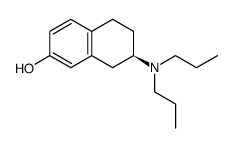Blockade of the acquisition, but not expression, of associative learning by pre-session intra-amygdala R(+) 7-OH-DPAT.
Gavin D Phillips, Paul K Hitchcott
Index: Psychopharmacology 203(1) , 161-73, (2009)
Full Text: HTML
Abstract
Two issues were addressed regarding the effects of amygdala dopamine manipulations on associative learning: first, an apparent contradiction between the effects of post- vs. pre-session dopaminergic manipulations and second, the ability of dopaminergic infusions to affect association formation vs. its expression following extended training.The ability of pre-session infusions of a dopamine receptor agonist (R(+) 7-OH-DPAT) to inhibit acquisition of a conditioned approach response was examined and compared with the same manipulation following overtraining. Further experiments extended these findings.Experiment 1 infused pre-session intra-amygdala R(+) 7-OH-DPAT (0, 0.1, 1 nmol) during conditioned approach acquisition. Experiment 2 applied pre-session intra-amygdala R(+) 7-OH-DPAT (0, 0.01, 0.1, 1 nmol) during expression of the same response, once well learned. Experiment 3 required the inhibition of a conditioned approach response following unconditioned stimulus (US) removal. Experiment 4 examined the ability of animals with prior drug experience to acquire a conditioned response to a novel stimulus.Experiments 1-3 showed that pre-session amygdala R(+) 7-OH-DPAT impaired acquisition of either excitatory or inhibitory conditioned responding, but was ineffective following overtraining. Drug-induced impairments in acquisition of a specific conditioned stimulus (CS)-US relationship continued well beyond the cessation of drug treatment, but were found not to transfer to an alternate CS in Experiment 4.Pre-session dopamine receptor activation within the amygdala may impair the acquisition, but not expression, of CS-US associations. Enhanced learning reported earlier following post-session dopamine receptor activation may occur indirectly through reduced interference with the consolidation of recent learning.
Related Compounds
| Structure | Name/CAS No. | Molecular Formula | Articles |
|---|---|---|---|
 |
R(+)-7-HYDROXY-2-DIPROPYLAMINO TETRALIN&
CAS:82730-72-1 |
C16H25NO |
|
Chemical genetics reveals a complex functional ground state ...
2007-05-01 [Nat. Chem. Biol. 3(5) , 268-273, (2007)] |
|
Genetic mapping of targets mediating differential chemical p...
2009-10-01 [Nat. Chem. Biol. 5 , 765-71, (2009)] |
|
Role of dopamine D2 and D3 receptors in mediating the U-50,4...
2012-11-01 [Addict. Biol. 17(6) , 949-55, (2012)] |
|
Stimulation of dopamine D2/D3 but not D1 receptors in the ce...
2010-12-25 [Behav. Brain Res. 214(2) , 386-94, (2010)] |
|
Role of the neurokinin-1 receptors in ejaculation in anesthe...
2009-01-01 [J. Sex. Med. 6(1) , 126-34, (2009)] |